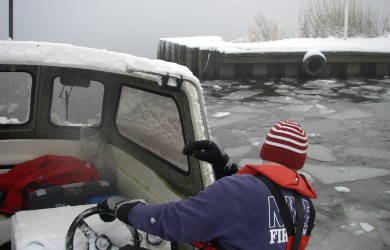Loch Leven
Loch Leven is the largest shallow loch in lowland Scotland, with a surface area of 13.7 km2, a mean depth of 3.9 m, and a catchment (watershed) covering 159 km2. The loch is a world-famous trout fishery, wildlife haven and recreational site. However, it is surrounded by many potential sources of pollution. These include industry, wastewater treatment works, septic tanks and farmland. These need to be managed carefully because inputs of nutrients, especially phosphorus, are a notable problem at this site.
Loch Leven has been monitored by the UK Centre for Ecology & Hydrology (UKCEH), and its predecessors, since 1968. Currently, this routine monitoring programme involves sampling the water and measuring key environmental variables every two weeks, all year round. Fish and macrophyte surveys are undertaken approximately every three years, and aquatic birds are counted every month by NatureScot. Detailed nutrient loading (input) assessments are carried out weekly, over a 1 year period, every 10 years.
When other sources of data are included, the Loch Leven dataset spans more than 150 years and includes a wide range of variables such as hydrology, chemistry, physics, aquatic plants (macrophytes), algae, zooplankton, macroinvertebrates, fish, and wildfowl. By making these data freely available, Loch Leven provides a research platform that supports many shorter scientific investigations and enables evidence-based decision making by policymakers and regulators. These data are used by the international research community to study lake eutrophication and recovery processes, and to assess the impacts of changes in climate, land use, and other pressures on lake water quality.

A case study of global importance
Find out more about the history of Loch Leven and the measures in place to restore it.
Read the case study
Long term monitoring
Visualise the long term monitoring data alongside recent yearly data.
View the data

Resources for schools
Online teaching materials based around a Loch Leven case-study have been developed.
Download the resources
Phytoplankton — what are algal blooms?
Find out more about blue-green algae, otherwise known as cyanobacteria.
Read more about algal blooms
Zooplankton
Zooplankton are very small animals that live in the open water of Loch Leven.
Read about zooplankton
Greenhouse gases
Greenhouse gas samples are collected at fortnightly intervals.
Read about greenhouse gases
Macroinvertebrates
Animals without a backbone that are large enough to be seen with the naked eye.
Read about macroinvertebrates


